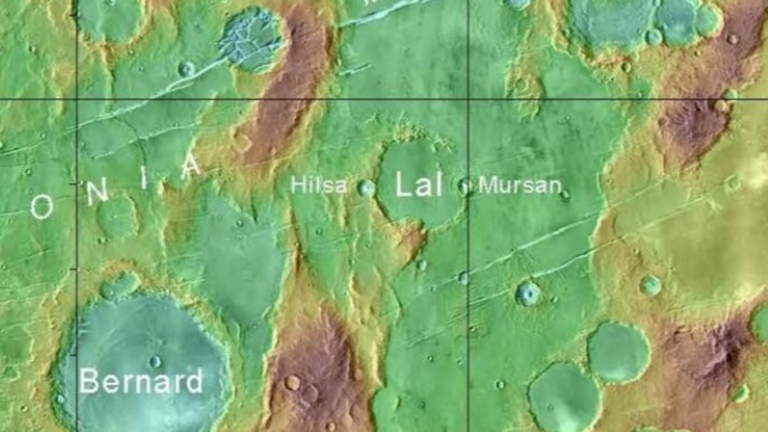
[ad_1]
Ahmedabad-based Physical Research Laboratory, a Unit of Department of Space, has said that three recently discovered craters on Mars have been named after its former director Devendra Lal—renowned cosmic ray physicist—and cities of Mursan and Hilsa in UP and Bihar respectively.
The Physical Research Laboratory said, though the discovery was made by PRL scientists in 2021, the but the naming was approved by International Astronomical Union (IAU) earlier this month.
The PRL said the three craters are situated in the Tharsis volcanic region—a vast volcanic plateau centred near the equator in the western hemisphere—of the Red Planet. The region is known as home to the largest volcanoes in the Solar System.
Ahmedabad-based research laboratory director Anil Bhardwaj said, “On the recommendation of the PRL, the International Astronomical Union (IAU) Working Group for Planetary System Nomenclature on June 5, 2024 approved naming the three craters on Mars craters as “Lal” crater, “Mursan” crater and “Hilsa” crater after PRL former director Devendra Lal, and two towns in UP and Bihar respectively.”
Lal crater: It is about 65 km wide crater, centered at -20.98° and 209.34°. The name is given after the renowned Indian geophysicist and former Director of PRL, Prof. Devendra Lal. He was the director of PRL during 1972-1983.
Mursan crater: It is 10 km wide crater and superimposed on the eastern side of the rim of the Lal crater. It is named after a town in Uttar Pradesh, India.
Hilsa crater: It is also 10 km wide crater and superimposed on the western side of the rim of the Lal crater. It is named after a town in Bihar, India.
Scientific importance
This discovery provides compelling evidence that the water has moved large volumes of sediment into the crater now named as “Lal Crater”. This finding also confirms that Mars was once wet and water has flown on the surface. Two small superimposed craters, on either side of Lal Crater, named as Mursan and Hilsa, provide the timeline for the infilling process of the Lal Crater and suggest that the infilling has been episodic, the statement said.
“The entire area of Lal crater, in the Tharsis volcanic region on Mars, is covered with lava. There are geophysical evidence of material other than lava in this crater, with a 45-m thick sedimentary deposit in the subsurface of the crater, obtained using subsurface radar SHARAD/MRO,” the PRL said
3.6 Crore Indians visited in a single day choosing us as India’s undisputed platform for General Election Results. Explore the latest updates here!
Download The Mint News App to get Daily Market Updates.
Published: 13 Jun 2024, 06:15 PM IST
[ad_2]